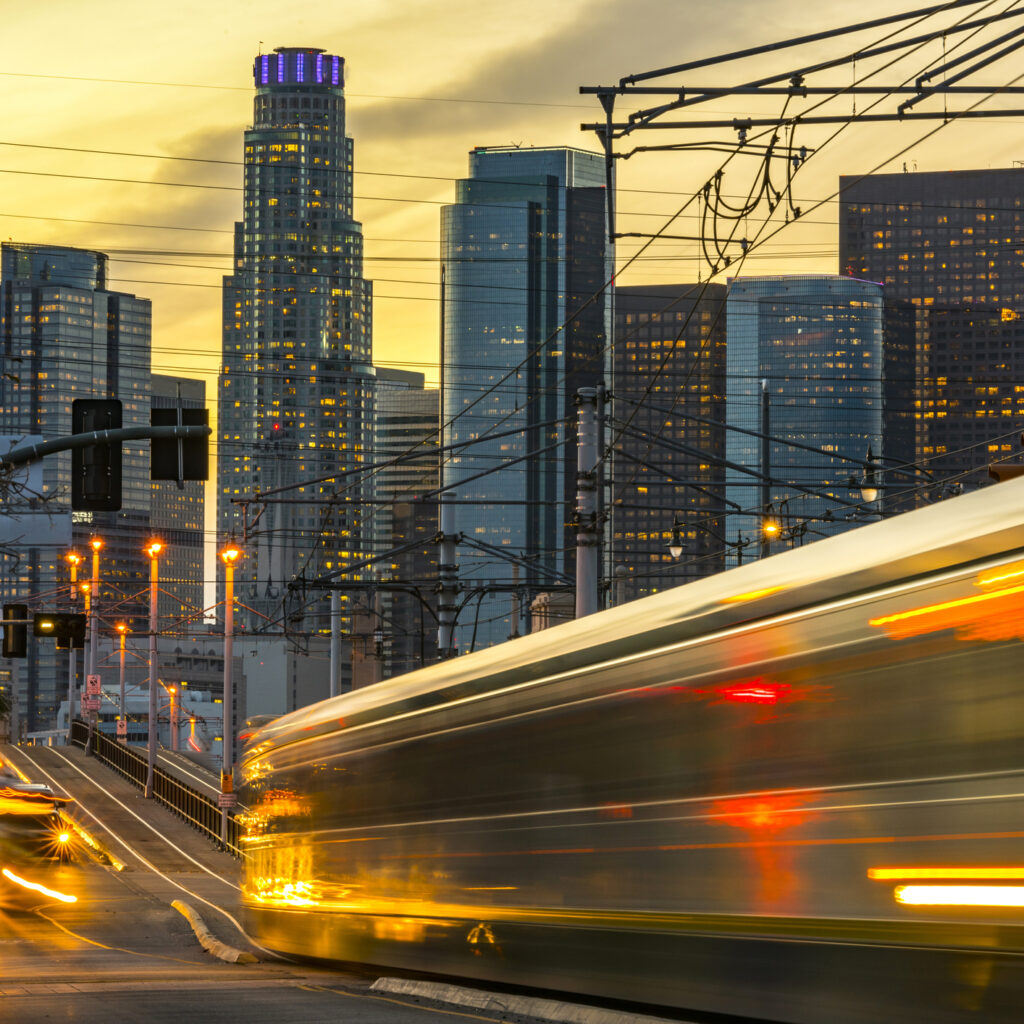
As Los Angeles prepares to host the 2028 Summer Olympics, questions remain on how effectively the city will get people to and from venues in a sprawling region that is famously ruled by cars.
Organizers plan on leasing over 2,000 buses using a network of designated lanes to get from venue to venue, with hopes that people take advantage of the system and follow through with LA Mayor Karen Bass’ vision for “car-free” games. The success of the Olympics will depend on tourists and Angelenos buying into public transportation, said California State University, Northridge Geography and Environmental Studies professor Ron Davidson.
“If there was an opportunity to change perceptions of public transportation in Los Angeles, it would be the Olympic Games,” Davidson said. “It’s going to make a big impression on the world, not just people who live here, but all the tourists who come and all the people who watch the event.”
Long known for its car culture and clogged freeways, Los Angeles’ reputation as a hard-to-navigate city where traffic shapes daily life isn’t new. The term “sprawling” became associated with the city when a photograph of the LA basin was on the cover of Sunset magazine, Davidson said.
“It looked like a carpet of lights. Downtown was not in the photo and it gave the impression that there was no downtown and was just one suburb after another after another,” Davidson said. “It was an unfair reputation because there was downtown, but you just didn’t see it in the picture. However, when LA hosted the 1932 Olympics, it did reinforce the idea that this is a car-dependent city that covers a tremendous amount of space.
“At that time, the two large-scale rail systems that served the city, the Pacific Electric and the Los Angeles Railway, were in decline, and the car was well on its way to becoming the dominant mode of transportation,” Davidson continued. “Now, almost a hundred years later, we have a limited rail system, a somewhat denser urban fabric, but the daily reality for many is a city of vast sluggish distances traversed via freeways.”
Reshaping that reality will take lots of work, but there is hope, Davidson said. When Los Angeles hosted the Olympics in 1984, there was skepticism from residents and fears loomed that if the city couldn’t nail down a transit plan, the entire event would be a failure.
However, none of that came to fruition as organizers were able to shuttle fans, athletes and leaders throughout the county with a robust bus system, which Davidson said will be modeled once again in 2028.
“While a lot has changed since the 1984 Olympics, visitors coming to LA are still going to view the city through the prism of transportation and, if planners can successfully pull a rabbit out of the hat and make the public systems work, it would be really wonderful for the city,” Davidson said.
Public transportation “will mean everything to these games,” he continued. “That’s what organizers promised when they made the bid – a no car Olympics.”
Davidson said the upcoming games could have the power to signal a new chapter in the city’s long storied history that reshapes the way people look at Los Angeles. That includes city leaders leading the charge and pushing for more lasting change beyond just the Olympics.
“LA seems to be a place that thrives on image and dreams and its belief in its own success, and I think this is one of those moments where we need those optimistic voices,” Davidson said. “Some may say this city is in an arc of decline, but we have a once in a generation event that can change perceptions and habits like never before.”


